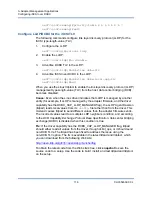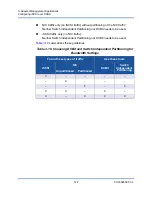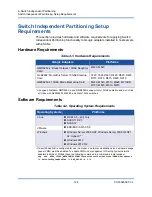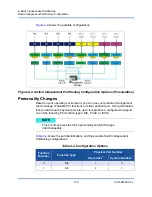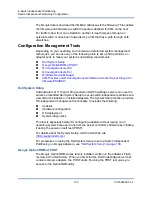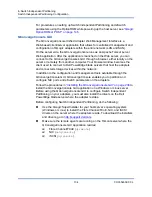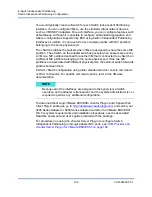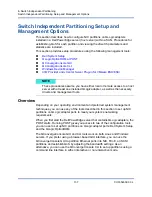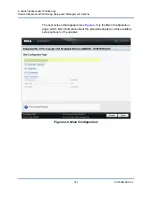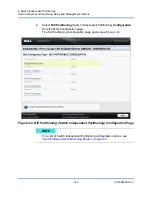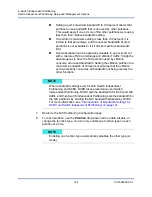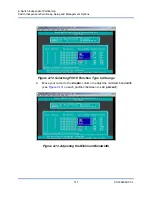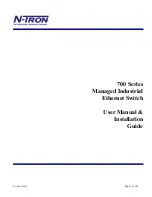
4–Switch Independent Partitioning
Switch Independent Partitioning Configuration
132
CU0354602-00 L
Enhanced transition services (ETS) control the actual bandwidth allocation at the
network port. The bandwidth allocation under ETS is typically 50 percent for FCoE
traffic and 50 percent for non-FCoE traffic (NIC and iSCSI). This means that
Switch Independent Partitioning QoS allocations among the NIC partitions for a
given port, allocate a percentage of the non-FCoE portion of the bandwidth.
Switch Independent Partitioning QoS allows NIC and iSCSI partitions to each
allocate a minimum guaranteed portion of the available bandwidth. However, the
user interface tools do not support setting the bandwidth limits for iSCSI partition.
This means that the iSCSI partition might not get the preferred bandwidth. For
example, if the total minimum allocated bandwidth across the NIC partitions
equals 100 percent, the iSCSI partition is limited to 1 percent of the NIC bandwidth
portion in high-usage conditions.
To ensure that iSCSI has more than one percent of bandwidth available in
high-usage conditions, set the total Switch Independent Partitioning QoS
minimum bandwidth settings so that they equal less than 100 percent.
For example:
A Switch-Independent-Partitioning-enabled port has two NIC partitions, one
iSCSI partition and one FCoE partition.
ETS allocates 50 percent of the network bandwidth to FCoE traffic and
50 percent to non-FCoE traffic.
The Switch Independent Partitioning QoS minimum bandwidth setting for
each NIC partition is 50 percent.
This means that each NIC partition is guaranteed 50 percent of
50 percent of 10Gb or 2.5Gb each.
If at any time the FCoE partition is using 5Gb of bandwidth and each NIC
partition is using 2.5Gb, the iSCSI partition is left with only 50Mb of
bandwidth.
If, however, the NIC partitions each allocated 45 percent of the non-FCoE
traffic, the total allocated bandwidth would be 90 percent.
The remaining 10 percent (or 500Mb) is then effectively reserved for
the iSCSi partition.
eSwitch
The adapters provide embedded switch functionality. This provides a basic
Layer-2 switch for Ethernet frames. Each physical port has one instance of an
eSwitch, which supports all NIC partitions on that physical port.
The eSwitch operation is transparent, and the administrator does not need to
perform any specific configuration. The ability to view eSwitch statistics depends
on your operating environment and management tool.
Содержание QLE8262
Страница 238: ...A Troubleshooting NIC Troubleshooting 223 CU0354602 00 L NIC Troubleshooting Figure A 1 NIC Diagnostics Flowchart ...
Страница 239: ...A Troubleshooting iSCSI Troubleshooting 224 CU0354602 00 L iSCSI Troubleshooting Figure A 2 iSCSI Diagnostics Flowchart ...
Страница 241: ...A Troubleshooting FCoE Troubleshooting 226 CU0354602 00 L Figure A 3 FCoE Diagnostics Flowchart ...

